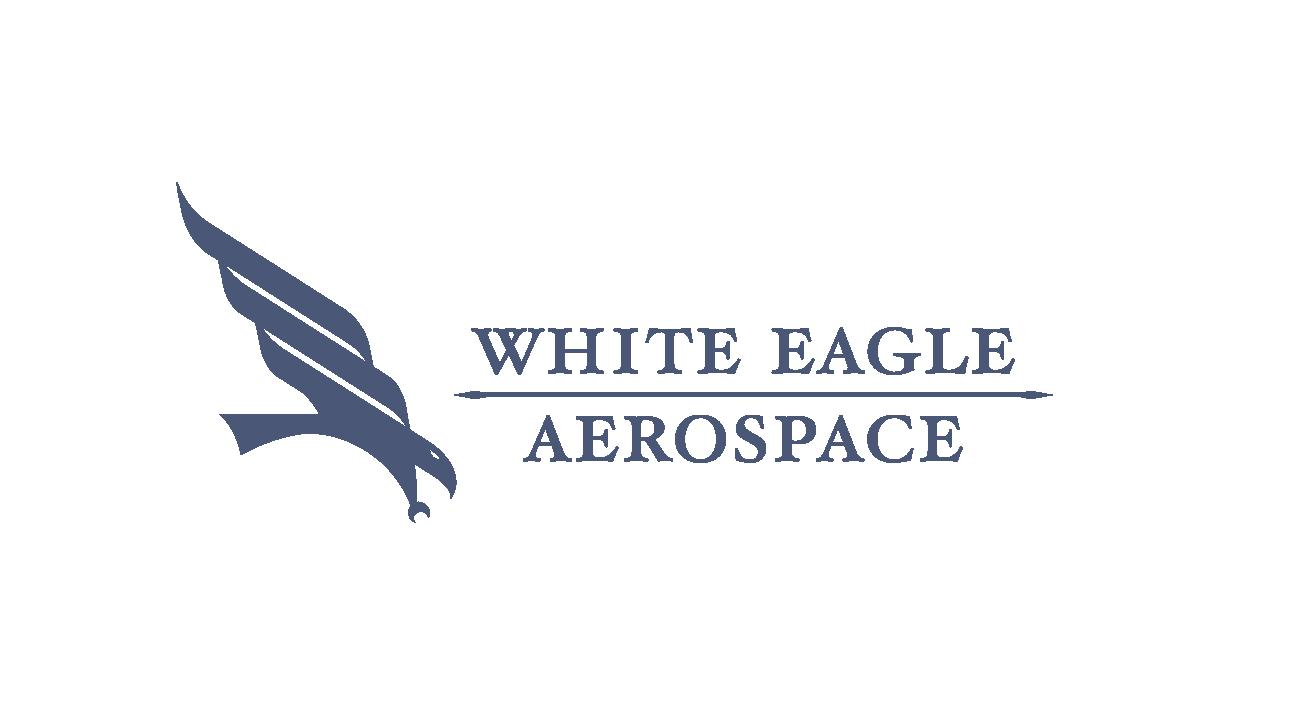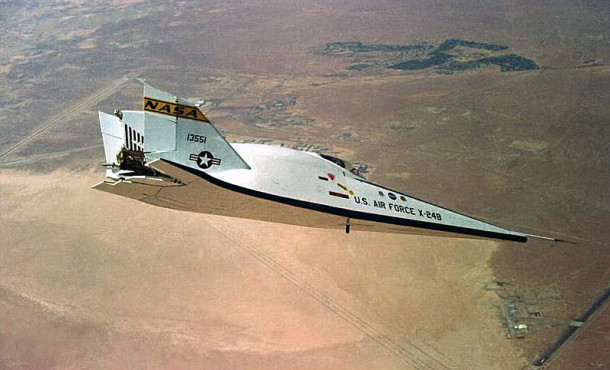
Forty years ago this month, the USAF/NASA/Martin X-24B became the first lifting body to make an unpowered precision landing on a concrete runway. The feat was pivotal to convincing NASA officials that landing the Space Shuttle Orbiter in an unpowered state was operationally feasible.
Early Space Shuttle Orbiter operational concepts featured the use of a pair of turbojets to provide a powered landing capability. These airbreathing engeines were to be internally stowed just below the Orbital Maneuvering System (OMS) pods. The turbojets would be deployed and started once the Orbiter had decelerated to high subsonic flight speeds.
While airbreathing propulsion would give the Orbiter a loiter and go-around capability, the drawbacks were significant. Jet fuel would have to be carried into and out of earth orbit. The weight of this fuel and the turbojets would severely penalize Orbiter payload capability. Further, the system would increase both the complexity of and cost to Shuttle operations.
As the Shuttle Program grappled with the development of a powered landing capability for the Orbiter, the NASA DFRC flight test community made what appeared to be a rather bold claim. The Orbiter could simply glide all the way to touchdown and land deadstick. After all, X-planes had been doing so safely and without incident since the late 1940’s.
A leading proponent of unpowered Shuttle landings was NASA DFRC test pilot John Manke. He was convinced that the Orbiter could routinely and safely conduct unpowered precision landings on a concrete runway. If true, the Orbiter could land anywhere a 15,000-foot concrete runway was located.
Manke proposed that the X-24B (S/N 66-13551) lifting body be employed to conduct unpowered precision landings on Runway 04/22 at Edwards Air Force Base. He and fellow test pilot USAF Lt. Col. Michael V. Love practiced low lift-to-drag precision landings using F-104 and T-38 aircraft in preparation for the demonstrations.
On Tuesday, 05 August 1975, John Manke successfully made the first-ever unpowered precision landing of an aircraft on a concrete runway. The X-24B main gear touched-down exactly at the aimpoint situated 5,000 feet down Runway 04/22. On Wednesday, 20 August 1975, Mike Love duplicated the feat.
Following the successful unpowered precision landings with the X-24B lifting body, John Manke was quoted as saying: “We now know that concrete runway landings are operationally feasible and that touchdown accuracies of ±500 feet can be expected.” NASA Space Shuttle Program management concurred and officially adopted the unpowered precision landing concept.
History records that thirty-one years of Orbiter flight operations confirmed the wisdom of that long-ago decision.
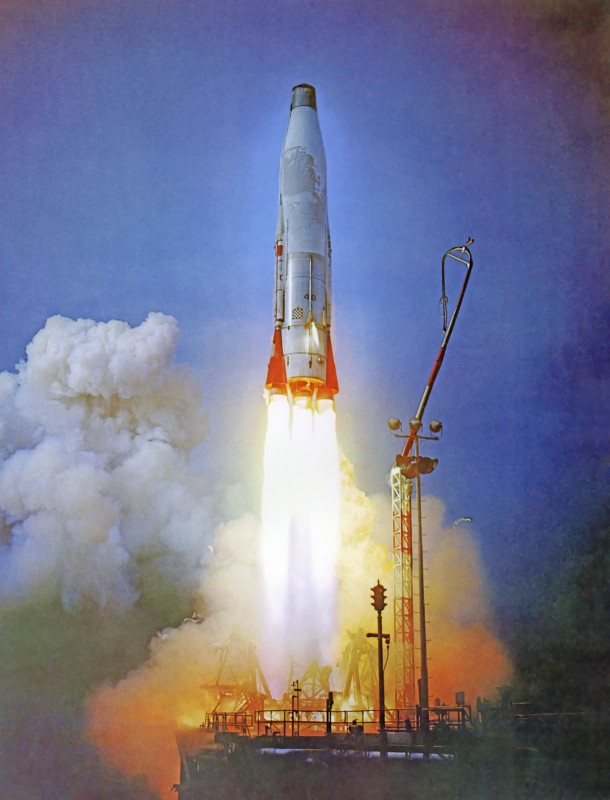
Fifty-seven years ago this week, an Atlas B flew 2,500 miles down the Eastern Test Range in a key developmental test of America’s first Intercontinental Ballistic Missile (ICBM). Among other historic achievements, the test marked the first successful flight of the innovative stage-and-a-half missile.
The infamous Cold War between the United States and the Soviet Union was marked by the specter of nuclear confrontation. Each side developed a family of launch vehicles that could deliver nuclear ordnance to the homeland of the other. The type of launch vehicle employed is known as an Intercontinental Ballistic Missile (ICBM).
An ICBM flies a long, arcing (sub-orbital) trajectory to the target. This flight path is parabolic in shape and thousands of miles in range. The maximum altitude point (apogee) is about mid-way to the target and is located hundreds of miles above the surface of the Earth. An ICBM can reach any point on the globe within 30 minutes of launch.
The first ICBM developed by the United States was the Atlas missile. The origins of this program date back to late 1945 when the United States Army requested proposals from the aerospace industry for novel long-range missile concepts. Consolidated-Vultee Aircraft (Convair) caught the Army’s eye with a missile design that ultimately became the Atlas.
The Atlas was innovative from a number of standpoints. Perhaps most novel was the use of very thin stainless steel tankage in an effort to provide the Atlas with an extremely lightweight structure. However, the tank was so thin that a screwdriver could easily puncture its walls. Moreover, the tank would collapse even under its own weight. Nitrogen pressurization was employed to obtain the necessary structural rigidity.
Another Atlas innovation involved the use of the so-called stage-and-a-half or parallel staging propulsion concept. This system was comprised of a pair of outboard boosters (Stage 0) and a single sustainer core (Stage 1). These engines burned a LOX/kerosene propellant mix and were ignited at launch. Stage 0 was jettisoned after 135 seconds of flight. The sustainer continued to fire an additional 95 seconds.
Atlas A was first flown in June of 1957. The type operated the booster engines only and carried a mass simulator warhead. Only three (3) of its eight (8) developmental flight tests were considered successful. The type achieved a maximum range of 600 nm during its third flight which occurred on Tuesday, 17 December 1957.
Atlas B was the first Atlas test vehicle to operate both the booster and sustainer rocket engines. The vehicle measured 85 feet in length and had a diameter of 10 feet. Lift-off weight was slightly over 244,000 pounds. Its XLR89-5 booster engines and XLR105-5 sustainer engine generated 341,130 and 81,655 pounds of vacuum thrust, respectively.
Atlas B test vehicles flew ten (10) times and enjoyed seven (7) successful flight tests. The first launch (Atlas B, Serial No. 3B) occurred on Friday, 19 July 1958 and was not successful. Atlas B, Serial No. 4B lifted-off from Cape Canaveral’s LC-13 at 22:16 UTC on Saturday, 02 August 1958. This test was entirely successful as the missile reached an apogee of 560 miles and traveled 2,500 miles downrange.
In the years that followed, other Atlas variants were developed including the Atlas C, D, E, F, G and H. Atlas C was the first pre-production version of the Atlas Program. Atlas D was the first operational version of the Atlas ICBM. Atlas E and Atlas F missiles were the first ICBM’s stored in underground silos and raised to ground level for launch. Atlas G and H launched numerous space exploration payloads.
Ironically, the Atlas did not serve long in its primary role as an ICBM. The type was quickly eclipsed by more capable launch vehicles such as the Titan II. However, the Atlas would be used to great effect as a launch vehicle for a wide variety of satellites and scientific spacecraft. The Atlas was ultimately man-rated as a booster. It was used to successfully orbit Mercury astronauts during four (4) Mercury missions flown in 1962 and 1963.
The Atlas has continued to evolve as a commercial launch platform to the current day. The Atlas I was introduced in July of 1990. It was followed by the Atlas II and Atlas III in 1991 and 2000, respectively. The Atlas V is the most recent Atlas variant and first flew in 2002. Significantly, the Atlas is the longest running launch vehicle program in the history of American spaceflight.
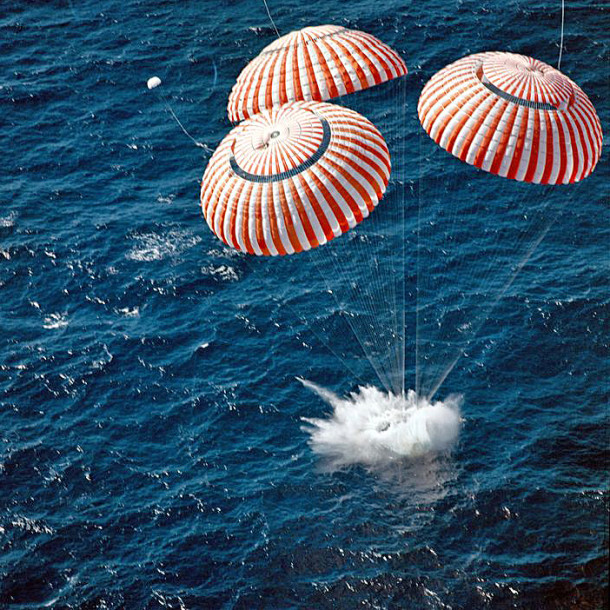
Forty-six years ago this month, Apollo 11 astronauts Neil A. Armstrong, Edwin E. Aldrin, Jr., and Michael Collins arrived back at the Johnson Spacecraft Center (MSC) in Houston, Texas following their epic journey to and safe return from the Moon.
Following splashdown in the Pacific Ocean on Thursday, 24 July, 1969, the Apollo 11 astronauts and their Command Module Columbia were brought aboard the USS Hornet. Concerned that they would infect Earthlings with lunar pathogens, NASA quarantined the astronauts in the Mobile Quarantine Facility (MQF), which was a converted vacation trailer.
The Hornet steamed for Hawaii and transferred the MQF for airlift to Ellington Air Force Base, Texas. Following landing, the MQF and its heroic occupants were transported to the MSC. Once there, the astronauts and several medical staff were transferred from the MQF to more substantial accomodations known as the Lunar Receiving Laboratory (LRL).
Combined stay time in the MQF and LRL was 21 days. During their forced confinement, Armstrong, Aldrin, and Collins debriefed the Apollo 11 mission, rested, and mused about their unforgettable experiences at the Moon.
The Apollo 11 astronauts were released from the LRL on Thursday, 13 August 1969, having never contracted or transmitted a lunar disease.
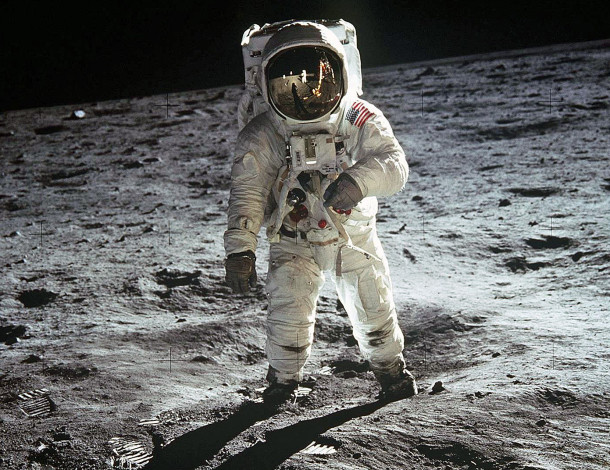
Forty-six years ago today, the United States of America safely landed two men on the surface of the Moon. This astounding technical achievement remains unmatched by any other sovereign nation in the history of mankind.
The Apollo 11 Lunar Module Eagle landed in Sea of Tranquility region of the Moon on Sunday, 20 July 1969 at 20:17:40 UTC. Less than seven hours later, astronauts Neil A. Armstrong and Edwin E. Aldrin, Jr. became the first human beings to walk upon Earth’s closest neighbor. Fellow crew member Michael Collins orbited high overhead in the Command Module Columbia.
As Apollo 11 commander, Neil A. Armstrong was accorded the privilege of being the first man to step foot upon the Moon. As he did so, Armstrong spoke these words: “That’s one small step for Man; one giant leap for Mankind”. He had intended to say: “That’s one small step for ‘a’ man; one giant leap for Mankind”.
Armstrong and Aldrin explored their Sea of Tranquility landing site for about two and a half hours. Total lunar surface stay time was 22 hours and 37 minutes. The Apollo 11 crew left a plaque affixed to one of the legs of the Lunar Module’s descent stage which read: “Here Men From the Planet Earth First Set Foot Upon the Moon; July 1969, A.D. We Came in Peace for All Mankind”.
Following a successful lunar lift-off, Armstrong and Aldrin rejoined Collins in lunar orbit. Approximately seven hours later, the Apollo 11 crew rocketed out of lunar orbit to begin the quarter million mile journey back to Earth. Columbia splashed-down in the Pacific Ocean at 16:50:35 UTC on Thursday, 24 July 1969. Total mission time was 195 hours, 18 minutes, and 35 seconds.
With completion of the flight of Apollo 11, the United States of America fulfilled President John F. Kennedy’s 25 May 1961 call to land a man on the Moon and return him safely to the Earth before the decade of the 1960’s was out. It had taken 2,979 demanding days and much national treasure to do so.
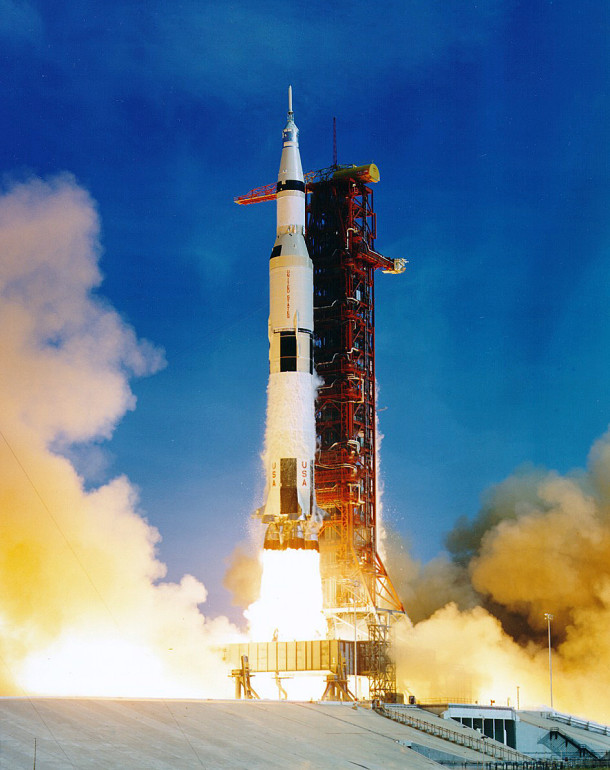
Forty-six years ago this week, the epic flight of Apollo 11, the first mission to land men on the Moon, began with launch from the Kennedy Space Center (KSC) at Merritt Island, Florida. Nearly 1-million people gathered around America’s famous space complex to witness the historic event. An estimated 1-billion viewers worldwide watched the proceedings on television.
The names of the Apollo 11 crew are now legend: Mission Commander Neil A. Armstrong, Lunar Module Pilot Edwin E. Aldrin, Jr., and Command Module Pilot Michael Collins. Each astronaut was making his second spaceflight.
The overall Apollo 11 spacecraft weighed over 100,000 pounds and consisted of 3 major components: Command Module, Service Module, and Lunar Excursion Module (LEM). Out of American history came the names used to distinguish two of these components from one another. The Command Module was named Columbia, the feminine personification of America, while the Lunar Excursion Module received the appellation Eagle in honor of America’s national bird.
The Apollo-Saturn V launch stack measured 363-feet in length, had a maximum diameter of 33-feet, and weighed 6.7-milllion pounds at ignition of its five F-1 engines. The vehicle rose from the Earth on 7.7-million pounds of lift-off thrust.
The acoustic energy produced by the Saturn’s first stage propulsion system was unlike anything in common experience. The sound produced was like intense, continuous thunder even miles away from the launch point. Ground and structure shook disturbingly and a person’s lungs vibrated within their chest cavity.
Lift-off of Apollo 11 (AS-506) from KSC’s LC-39A occurred at 13:32 UTC on Wednesday, 16 July 1969. The target for the day’s launch, the Moon, was 218,096 miles distant from Earth. It took 12 seconds just for the massive Apollo 11 launch vehicle to clear the launch tower. However, a scant 12 minutes later, the Apollo 11 spacecraft was safely in low earth orbit (LEO) traveling at 17,500 miles per hour.
Following checkout in earth orbit, trans-lunar injection, and earth-to-moon coast, Apollo 11 entered lunar orbit nearly 76 hours after lift-off. Now, the big question: Would they make it? Even Apollo 11’s Command Module Pilot, Michael Collins, estimated that the chance of a successful lunar landing on the first attempt was only 50/50. The answer would soon come. History’s first lunar landing attempt was now only 24 hours away.
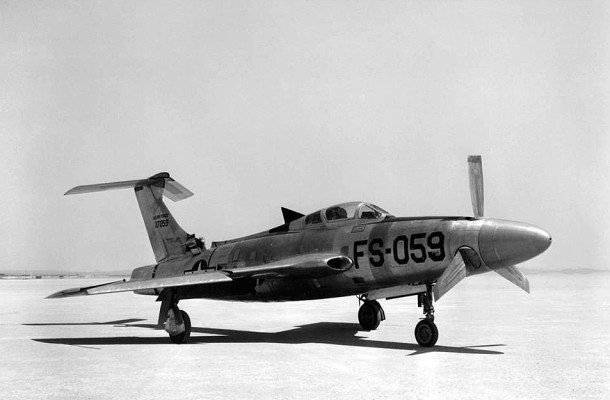
Sixty years ago this month, the USAF/Republic XF-84H experimental turboprop fighter took to the air on its maiden flight. The test sortie was flown at Edwards Air Force Base with Republic test pilot Henry G. “Hank” Beaird, Jr. at the controls.
The XF-84H was an experimental variant of Republic Aviation’s turbojet-powered F-84 Thunderstreak. An Allison XT40-A-1 turboprop engine, rated at 5,850 hp, served as the power source for this novel aircraft. The XT40 drove a variable-pitch, 3-blade, 12-foot diameter propeller at 3,000 rpm. Thrust level was changed by varying blade pitch.
Owing to its high rotational speed and large diameter, the outer 2 feet of the XF-84H propeller saw supersonic velocities. The shock waves that emanated from the prop produced a deafening wall of sound. The extreme sound level produced intense nausea and raging headaches in ground crewmen. As a result, the XF-84H was dubbed the Thunderscreech.
The prop wash from the aircraft’s powerful turboprop necessitated the use of a T-tail to keep the horizontal tail and elevator in clean air flow. The engine’s extreme torque was partially countered by differential deflection on the left and right wing flaps and by placement of the aircraft’s left wing root air intake a foot ahead of the its right intake.
A pair of XF-84H prototype aircraft (S/N 51-17059 and S/N 51-17060) was built by Republic Aviation. The inaugural flight of an XF-84H took place on Friday, 22 July 1955 at Edwards Air Force. This test hop, performed in Ship No. 1 (S/N 51-17059), was cut short by a forced landing.
A total of twelve (12) test flights were made in the two Thunderscreech prototypes; eleven (11) in Ship No. 1 and one (1) in Ship No. 2. Total flight time accumulated by these experimental airframes was 6 hours and 40 minutes. The majority of flights experienced forced landings for one reason or another.
The XF-84H suffered from reduced longitudinal stability and poor handling qualities. The aircraft was also plagued by frequent engine, hydraulic system, nose gear and vibration problems. Faced with the type’s obvious non-viability, USAF opted to cancel the XF-84H Program in September of 1956.
Historical records indicate that the XF-84H reached a top speed of 520 mph during its brief flight test life. This figure was a full 120 mph short of the aircraft’s design speed. Nonetheless, the XF-84H held the speed record for single-engine prop-driven aircraft until Monday, 21 August 1989. On that date, a specially modified Grumman F8F Bearcat established the existing record of 528.33 mph.

Fifty-eight years ago today, the USAF/Convair XB-58A (S/N 55-660) Hustler first attained its double-sonic design airspeed when it was flown to Mach 2.03 at an altitude of 43,250 feet. This historic achievement took place at Edwards Air Force Base on the type’s 24th test flight. The mission totaled 1 hour and 55 minutes with famed Convair test pilot Beryl Arthur Erickson at the controls.
The B-58A Hustler was the United States first supersonic-capable bomber and was originally designed for the strategic mission. The aircraft was powered by four (4) General Electric J79-GE-5A turbojets generating 62,400 lbs of sea level thrust in afterburner. Maximum take-off weight was nearly 177,000 lbs.
Convair’s stunning delta-winged bomber was 97 feet in length with a wing span of 57 feet. Wing area was roughly 1,550 square feet. Aircraft maximum height was 30 feet as measured from the ground to the top of the vertical tail.
Flight crew for the B-58A consisted of the pilot, bombadier/navigator, and defensive systems operator. The crew was arranged in tandem with each crew member seated in a separate cockpit. The type carried thermonuclear ordnance. A total of 116 B-58A aircraft were manufactured.
The Hustler’s performance was impressive then and now. It had a maximum speed of 1,400 mph and a service ceiling of 63,400 feet. The aircraft could climb in excess of 17,000 feet per minute at gross take-off weight and up to 46,000 feet per minute near minimum weight.
The B-58A had a difficult gestation due to its advanced design and demanding performance requirements. A large number of aircraft and flight crews were lost due to a variety of flight control and structural problems. First flight took place on 11 November 1956 with the type finally entering the USAF inventory on 15 March 1960.
The USAF/Convair B-58A Hustler was operational for nearly 10 years and was retired on 31 January 1970. The aircraft was never used in anger.
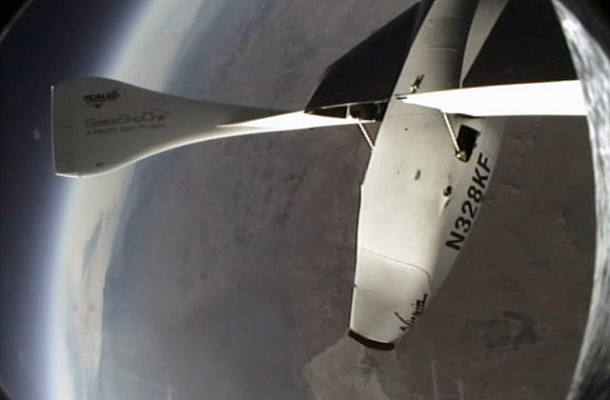
Eleven years ago this week, Scaled Composite’s SpaceShipOne flew to an altitude of 62.214 statute miles. The flight marked the first time that a privately-developed flight vehicle had flown above the 62-statute mile boundary that entitles the flight crew to FAI-certified astronaut wings. As a result, SpaceShipOne pilot Mike Melvill became history’s first private citizen astronaut.
On Monday, 21 June 2004, SpaceShipOne Mission 15P began with departure from California’s Mojave Spaceport at 0647 PDT. Carrying SpaceShipOne at the centerline station, Scaled’s White Knight aircraft climbed to the drop altitude of 47,000 feet.
At 0750 PDT, the 7,900-pound SpaceShipOne fell away from the White Knight and Melvill immediately ignited the 16,650-pound thrust hybrid rocket motor. Melvill quickly then pulled SpaceShipOne into a vertical climb.
Passing through 60,000 feet, SpaceShipOne experienced a series of uncommanded rolls as it encountered a wind shear. Melvill struggled with the controls in an attempt to arrest the roll transient. Then, late in the boost, the vehicle lost primary pitch trim control. In response, Melvill switched to the back-up system as he continued the ascent.
Rocket motor burnout occurred at 180,000 feet with SpaceShipOne traveling at 2,150 mph. It now only weighed 2,600 pounds. The vehicle then coasted to an apogee of 62.214 statute miles (328,490 feet). The target maximum altitude was 68.182 statute miles (360,000 feet). However, the control problems encountered going upstairs caused the trajectory to veer somewhat from the vertical.
Melvill experienced approximately 3.5 minutes of zero-g flight going over the top. He had some fun during this period as he released a bunch of M&M’s and watched the chocolate candy pieces float in the SpaceShipOne cabin.
Back to business now, Melvill transitioned SpaceShipOne to the high-drag feathered configuration in preparation for the critical entry phase of the mission. The vehicle initially accelerated to over 2,100 mph in the airless void before encountering the sensible atmosphere. At one point during atmospheric entry, Melvill experienced in excess of 5 g’s deceleration.
At 57,000 feet, Melvill reconfigured SpaceShipOne back to the standard aircraft configuration for powerless flight back to the Mojave Spaceport. Fortunately, the aircraft was a very good glider. The control problems encountered during the ascent resulted in atmospheric entry taking place 22 statute miles south of the targeted reentry point.
SpaceShipOne touched-down on Mojave Runway 12/30 at 0814 PDT; thus ending an historic, if not harrowing mission.
After the flight, Mike Melvill had much to say. But perhaps the following quote says it best for the rest of us who can only imagine what it was like: “And it was really an awesome sight, I mean it was like nothing I’ve ever seen before. And it blew me away, it really did. … You really do feel like you can reach out and touch the face of God, believe me.”
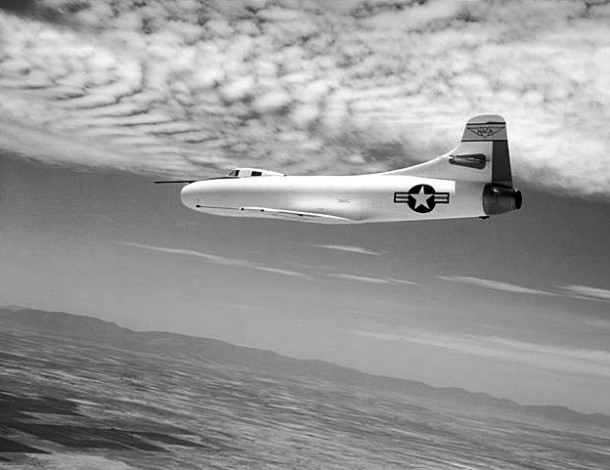
Sixty-two years ago this month, NACA test pilot A. Scott Crossfield piloted the United States Navy/Douglas D-558-I Skystreak transonic research aircraft on the last of 230 flights. The type’s final test flight was flown on Wednesday, 10 June 1953 at Edwards Air Force Base, California.
Flight near and beyond the speed of sound is characterized by large variations in flowfield density. Variable density flow is known as compressible flow. A key compressible flow phenomenon is the formation of shock waves which result when the supersonic freestream is deflected or turned by the presence of the aircraft.
As every aircraft has a distinct shape, it also has its own distinct shock wave system. The topology and strength of this 3-dimensional shock wave system significantly affects aircraft flight performance, stability and control, handling qualities, airframe buffet characteristics and airloads.
Following World War II, the United States initiated a sustained flight research effort in the realm of transonic and supersonic flight. In league with the US military and the National Advisory Committee For Aeronautics (NACA), the American aeronautical industry designed and built a variety of aircraft used to conduct flight research during the 1940’s and 1950’s. These experimental aircraft were the first of the fabled X-planes.
In June of 1945, the Douglas Aircraft Company was awarded a contract by the United States Navy (USN) to build a total of six (6) flight research aircraft. These vehicles would be used in a two phase flight research program. Phase I was devoted to transonic flight testing while Phase II would investigate supersonic flight. The Phase I aircraft was known as the D-558-I Skystreak while the Phase II airplane was called the D-558-II Skyrocket.
The USN/Douglas D-558-I Skystreak measured 36-feet in length and had a wingspan of 25-feet. The straight-winged aircraft weighed a bit over 10,000 pounds and was powered by an Allison J35 turbojet rated at 5,000 pounds of sea level thrust. The aircraft was single place and employed ground take-off. Three (3) copies were made; BuAer tail numbers 37970, 37971 and 37972.
Later painted white to improve visibility, each Skystreak external airframe was originally painted a stunning red. This led to the type’s nickname of the “Crimson Test Tube”. Other nicknames included the “Flying Stove Pipe” and the “Supersonic Test Tube”. This last moniker is misleading in that the aircraft could only go slightly supersonic and only in a dive.
Along with its D-558-II companion, the D-558-I helped write the book on transonic aircraft aerodynamics. The D-558-I Skystreak acquired vital flight data relative to aircraft stability and control, handling qualities, airframe buffet and airloads. Those data are used to support aircraft design efforts down to the present day.
Pilots reported that the D-558-I exhibited generally favorable handling qualities. However, the Skystreak had its share of peculiar transonic aerodynamic attributes as well. Wing drop due to asymmetric shock-induced separation was one such phenomenon. Reduced control effectiveness and severe lateral-directional oscillations, both due to shock wave-induced flow separation at high Mach number, were exhibited as well.
Beyond 0.94 Mach number, the D-558-I experienced a phenomenon known as “Mach Tuck”. This condition is attributable to an aftward shift in the aircraft transonic center-of-pressure location as the pressure pattern over the aircraft changes with Mach number. This is equivalent to an increase in nose down pitching moment. Taken to extremes, the “Mach Tuck” flight condition is unrecoverable due to an exceedance of pitch control authority.
Approximately 15 men flew the D-558-I Skystreak 230 times between April of 1947 and June of 1953. One aircraft and one pilot was lost during the type’s flight research program. NACA test pilot Howard Lilly died and aircraft 37971 was destroyed when a J35 turbojet compressor blade failed during take-off on Tuesday, 25 November 1947.
Today the surviving aircraft are publically displayed in tribute to the Skystreak’s contributions to aeronautics. Tail No 37970 is displayed at the Naval Air Museum in Pensacola, Florida while Tail No. 37972 can be viewewd at the Carolinas Avaiation Museum in Charlotte, North Carolina.
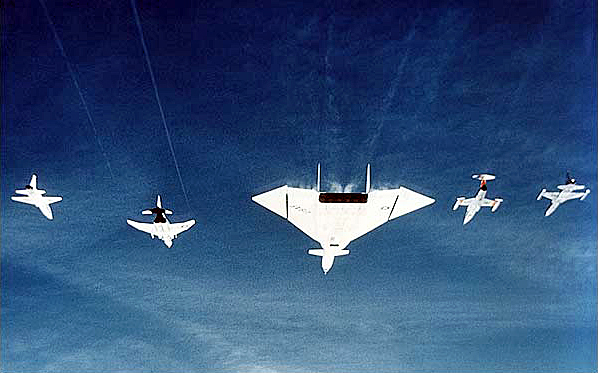
Forty-nine years ago today, XB-70A Valkyrie Air Vehicle No. 2 (62-0207) and a NASA F-104N Starfighter (N813NA) were destroyed following a midair collision near Bartsow, CA. USAF Major Carl S. Cross and NASA Chief Test Pilot Joseph A. Walker perished in the tragedy.
On Wednesday, 08 June 1966, XB-70A Valkyrie Air Vehicle No. 2 took-off from Edwards Air Force Base, California for the final time. The crew for this flight included aircraft commander and North American test pilot Alvin S. White and right-seater USAF Major Carl S. Cross. White would be making flight No. 67 in the XB-70A while Cross was making his first. For both men, this would be their final flight in the majestic Valkyrie.
In the past several months, Air Vehicle No. 2 had set speed (Mach 3.08) and altitude (74,000 feet) records for the type. But on this fateful day, the mission was a simple one; some minor flight research test points and a photo shoot.
The General Electric Company, manufacturer of the massive XB-70A’s YJ93-GE-3 turbojets, had received permission from Edwards USAF officials to photograph the XB-70A in close formation with a quartet of other aircraft powered by GE engines. The resulting photos were intended to be used for publicity.
The formation, consisting of the XB-70A, a T-38A Talon (59-1601), an F-4B Phantom II (BuNo 150993), an F-104N Starfighter (N813NA), and an F-5A Freedom Fighter (59-4898), was in position at 25,000 feet by 0845. The photographers for this event, flying in a GE-powered Gates Learjet Citation (N175FS) stationed about 600 feet to the left and slightly aft of the formation, began taking photos.
The photo session was planned to last 30 minutes, but went 10 minutes longer to 0925. Then at 0926, just as the formation aircraft were starting to leave the scene, the frantic cry of Midair! Midair Midair! came over the communications network.
Somehow, the NASA F-104N, piloted by NASA Chief Test Pilot Joe Walker, had collided with the right wing-tip of the XB-70A. Walker’s out-of-control F-104 then rolled inverted to the left and sheared-off the XB-70A’s twin vertical tails. The F-104N fuselage was severed just behind the cockpit and Walker died instantly in the terrifying process.
Curiously, the XB-70A continued on in steady, level flight for about 16 seconds despite the loss of its primary directional stability lifting surfaces. Then, as White attempted to control a roll transient, the XB-70A rapidly departed controlled flight.
As the doomed aircraft torturously pitched, yawed and rolled, its left wing structurally failed and fuel spewed furiously from its fuel tanks. White was somehow able to eject and survive. Cross never left the aircraft and rode it down to impact just north of Barstow, California.
A mishap investigation followed and (as always) blame was assigned and new procedures implemented. However, none of that changed the facts that on this, the Blackest Day at Edwards Air Force Base, American aviation lost two of its best men and aircraft in a flight mishap that was, in the final analysis, preventable.











